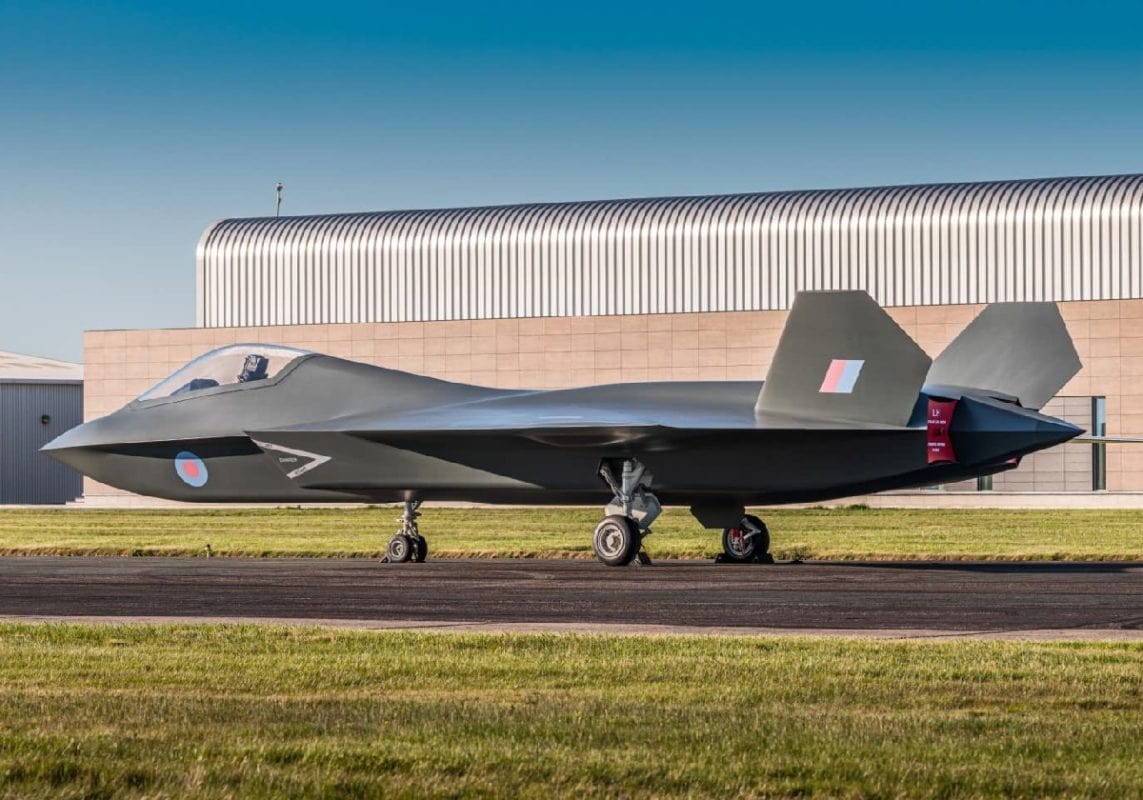The UK is clearly interested in thinking beyond the F-35 or the current generation of stealth fighter weapons. The Tempest could be a truly dangerous fighter jet, but costs could play a big role if this ever flies: While most militaries that have bought the F-35 Joint Strike Fighter stealth jet are slowly integrating stealth fighter jets into their air fleets, countries have already begun working on sixth-generation aircraft.
The United Kingdom has started strong with the Tempest.
Tempest Fighter Jet: What We Know
According to the Royal Air Force, the Tempest fighter jet will be the United Kingdom’s next-generation combat aircraft, capable of operating at the cutting edge of technological innovation in order to secure the British military’s place as a major player in combat aviation.
When it comes to the airframe, the Tempest brings four main features.
A balanced survivability design that will allow the sixth-generation fighter jet to get a picture of the battlefield while remaining hidden from ground and air threats and carrying a significant payload.
A next-generation flight control system that includes flexible, software-driven systems, which will allow for easy and rapid changes in capability to reflect and meet the needs of any operator.
An adaptable physical architecture that will adapt to a wide range of mission sets and include versatile and variable software and hardware to meet the needs of every operation; operators will be able to pick and choose weapons, sensors, and fuel capacity depending on the mission.
A scalable autonomy that will include several different modes of operation, including the option to operate the aircraft with a human pilot or remotely.
When it comes to the two Rolls Royce engines, the Tempest brings to the table the following four features.
A more efficient power system that is designed to deliver greater range and endurance via an improved and higher thrust-to-weight ratio, meaning that the Tempest will be able to produce more power than its weight, thus making it more agile.
An improved propulsion designed to aerodynamically match the aircraft and optimize the overall performance of the fighter jet, including operational range and payload capacity.
More electrical power that the aircraft’s main computer will intelligently distribute throughout the aircraft to power the multiple high-tech systems and sensors.
And finally, thermal management capabilities will enable the Tempest to efficiently cool the air system and thus minimize the aircraft’s thermal signature.
Some additional features the Tempest will have include a virtual cockpit without a single dial or screen, reconfigurable communications systems, haptics, which gives the pilot the sensation of touch in active reality and virtual reality environments, and integrated effects that will allow the Tempest to engage targets with non-kinetic options, such as electronic warfare jamming and even directed energy weapons.
Moreover, art conceptions of the fighter jet released by the British Ministry of Defense and Team Tempest suggest that the sixth-generation fighter jet will have thrust vectoring capabilities, much like the U.S. F-22 Raptor has. These two-dimensional thrust vectoring capabilities can allow a fighter jet to fly in one direction but use its thrust vectoring technology to point the thrust of its engines elsewhere, and thus change directions rapidly in what must be one of the most intriguing and eye-pleasing air combat maneuvers.
Team Tempest
Launched in 2018, Team Tempest is a group of different defense and aerospace companies working together on the conception and development of the United Kingdom’s sixth-generation fighter jet.
Initially, Team Tempest began with four main companies working on the project. These industry heavyweights included BAE Systems, Rolls-Royce, Leonardo U.K., and MBDA U.K. But in July 2020, the four plank owners were joined by seven more companies (GEUK, GKN, Collins Aerospace, Martin Baker, QinetiQ, Bombardier and Thales UK).
The whole Team Tempest in now working alongside several British universities and individual subject matter experts to develop the technology and avionics for the Tempest fighter jet.
“Just two years after Team Tempest was created they delivered a world first. It’s no surprise; when you attract the very best of British engineering and design, technological leaps like these are guaranteed. That’s why I’m delighted seven more companies have joined this mission to work in collaboration with the MOD, under the Team Tempest banner. They will bring the ambition, invention and expertise that will deliver the breakthroughs we will depend on for decades to come. These pioneers will strengthen our ability to develop a next-generation aircraft and allow us to continue making vital contributions to UK, European and global security,” British Secretary of Defense Ben Wallace had said.

Tempest Stealth Fighter. Artist Image from BAE.
The British Ministry of Defense has stated that it wants to have the Tempest operational and in numbers by 2035 to replace the aging Eurofighter Typhoon. Thus far, the program has been proceeding steadily. Back in the summer of 2021, the British Ministry of Defense awarded Team Tempest a £250 million (approximately $350 million) contract to provide digital and physical infrastructure for the development of the Tempest.
As part of the Tempest, the Royal Air Force is also working on LANCA (Lightweight Affordable Novel Combat Aircraft), an unmanned aerial vehicle that is designed to fly alongside the Tempest and provide support and increased capabilities.
1945’s New Defense and National Security Columnist, Stavros Atlamazoglou is a seasoned defense journalist specializing in special operations, a Hellenic Army veteran (national service with the 575th Marine Battalion and Army HQ), and a Johns Hopkins University graduate. His work has been featured in Business Insider, Sandboxx, and SOFREP.

